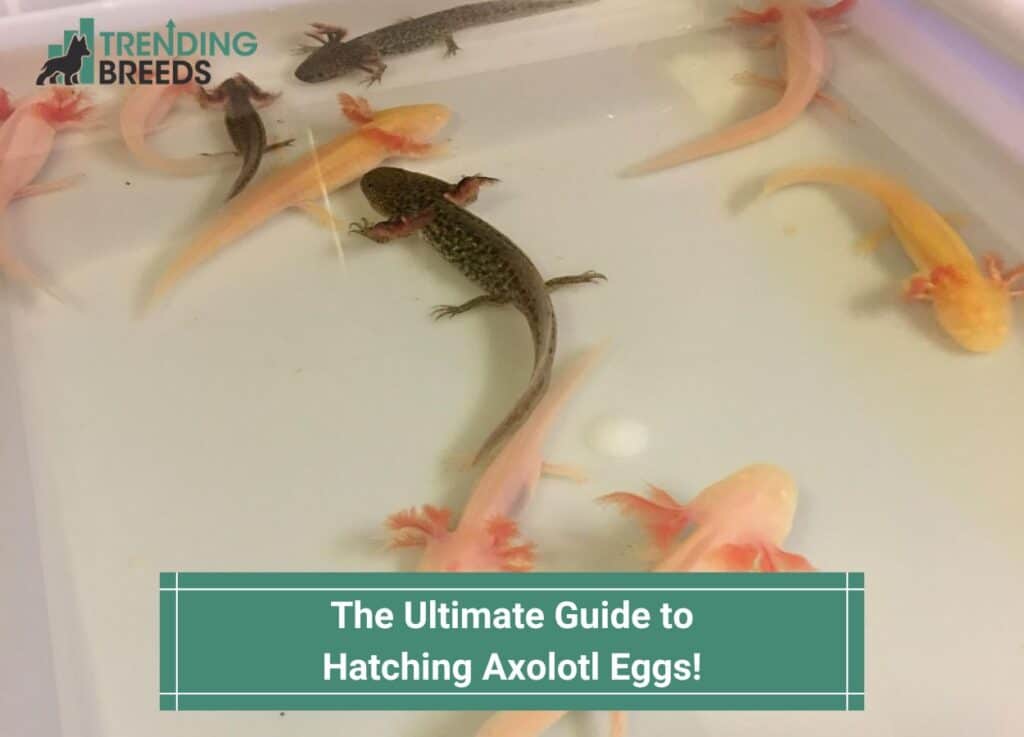
If you are thinking of breeding axolotls, you must have a billion questions on how to do it right, especially hatching axolotl eggs.
This guide guarantees a significantly elevated success rate in your axolotl breeding endeavors.
Breeding axolotls can be a rewarding and manageable undertaking.
With proper guidance, care, and consistency, you can create a whole army of tiny axolotls in no time that will thrive till their old age.
Read on to learn more.
Before you scroll further down this guide, check out these other animal-related articles: What Do Fish Eggs Look Like? and Does A Squirrel Lay Eggs?.
Table of Contents
The Lifespan of an Axolotl
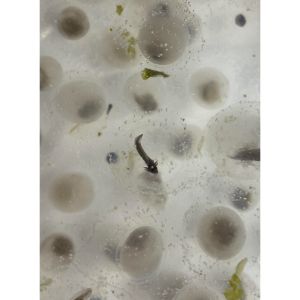
In an aquarium setting, axolotls typically have an average lifespan of 10 to 15 years.
That highlights the importance of proper care, including regular feeding and consistent water changes, to maintain optimal water conditions for their well-being.
You should only pursue breeding activities if you meet these conditions.
Ensuring the health and welfare of your axolotls should always be the top priority before considering any breeding endeavors.
Lifecycle of an Axolotl
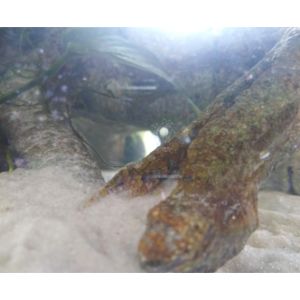
The life cycle of an axolotl commences like many other organisms, starting with the development of an embryo within the female axolotl.
This embryo goes through fertilization by introducing spermatophores from the male axolotls.
An unfertilized embryo appears noticeably smaller compared to a fertilized one.
It typically measures around 0.2 cm in diameter and is enveloped by a protective layer of jelly, consisting of multiple layers, which safeguards the developing fetus.
In contrast, a fertilized egg is slightly larger than an unfertilized one, measuring approximately 11 mm in diameter.
The duration of the transition from a fertilized egg to a young hatchling varies depending on the water temperature, typically ranging from under 14 days to nearly a month.
It is important to note that the water temperature plays a significant role in the development timeline of the axolotl embryo, affecting the duration of each growth stage.
Temperature plays a significant role. As a general rule, higher temperatures accelerate the hatching process.
For instance, if you maintain the axolotl eggs at a maximum temperature of 25°C, they should typically hatch within 14 days.
However, if the temperature drops to around 18°C, it may take at least 20 days or longer for the eggs to hatch.
Once the eggs hatch, it is crucial to provide daily feeds, typically once or twice a day.
After approximately 8 to 9 days, you should notice their growth, with a length of about 2 cm, and the development of their front limbs.
As the baby axolotls reach about 2.5 cm in length, their front limbs will become more prominent, and you will notice their hind limb buds beginning to develop.
It’s essential to control the number of axolotls in each containment to prevent casualties or cannibalism, as their instincts may emerge over time as they grow.
Once they reach approximately 4 cm in length, you can introduce frozen foods such as frozen brine shrimps, frozen bloodworms, or frozen Daphnia in cubes.
Breeders have observed that wild-type axolotl babies are more aggressive towards non-wild types.
Therefore, if you wish to categorize and separate your axolotls, this is an excellent opportunity.
Avoid frequent water changes as they can cause stress to the larvae axolotls.
Instead, consider using wool or sponge filters, as they are effective filters that can reduce the frequency of water changes.
Be cautious with internal pumps or aeration that may create strong water flow.
Many breeders have experienced significant losses due to excessive water flow, as the delicate larvae cannot tolerate such forceful currents in their fragile state.
Length and Maturity of Axolotls
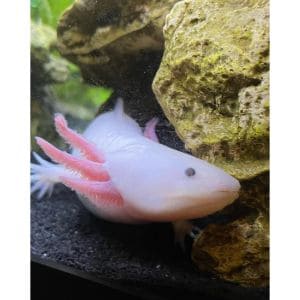
Axolotls generally reach their full size at around 30 to 40 cm. Most axolotl keepers find their axolotls are approximately 30 to 35 cm long.
However, some keepers have reported growing their axolotls up to 40 cm long with proper care and optimal conditions.
You can determine if an axolotl is sexually mature by observing specific physical indications.
These include the toes turning brownish-black, the cochlear area becoming prominent, or the axolotl reaching at least 18 months of age or a length of at least 30 cm.
Female axolotls generally take longer to reach maturity compared to males.
However, with slight individual variations and depending on diet and feeding frequency, most axolotls should reach sexual maturity around 18 cm in length.
It is crucial to highlight that breeding significantly affects the female axolotl’s body.
Therefore, after the breeding season, isolating or separating the female axolotls from the males for 1 to 3 months is recommended to allow them to recover and recuperate in a peaceful environment.
Breeding Periods

Axolotls generally exhibit breeding behavior at least twice yearly, typically from December to June.
This breeding season occurs when the axolotls have matured, are well-fed, and are properly cared for.
If the housing space for your axolotls receives partial sunlight and warmth, preferably near a window, breeding is more likely to occur naturally.
Breeding activities primarily occur during the early winter months and continue until spring ends.
However, it’s worth noting that in rare instances, axolotls may breed outside of this specific duration.
Light exposure, water conditions, and temperature can influence their breeding patterns.
Creating an environment that mimics these ideal conditions can increase the chances of successful mating among your axolotls.
Breeding Tip 1
It is beneficial to have plants in the tank where the female axolotl can attach her eggs to facilitate the breeding process and simplify the handling of eggs.
That allows for more accessible transportation and separation of the eggs from the parents when needed.
Before the mating season, if your axolotls live in the same tank, separating them for two to three weeks is highly recommended.
During this time, maintain the separated axolotls at around 20°C to 22°C.
After this separation period, reintroduce them to the same tank, which should be at least 5°C cooler than their previous environment.
This temperature difference helps trigger courtship behavior between the axolotls.
Breeding Tip 2
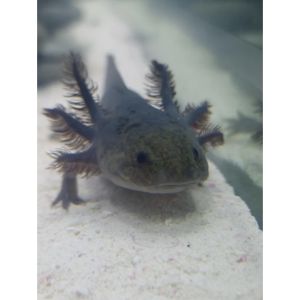
Breeder experiences have shown that another potentially effective technique, although subject to individual axolotls, involves manipulating daylight exposure.
Separating the amount of daylight exposure for male and female axolotls throughout 2 to 3 weeks and then gradually increasing the daylight exposure, there is a higher likelihood of the axolotls mating upon reintroduction.
This technique relies on adjusting the light conditions to simulate seasonal changes and trigger axolotl breeding behavior.
However, it’s important to note that the response may vary among individual axolotls.
Monitoring the behavior of the axolotls closely during this process is essential to ensure their well-being and readiness for mating.
Temperature of Breeding
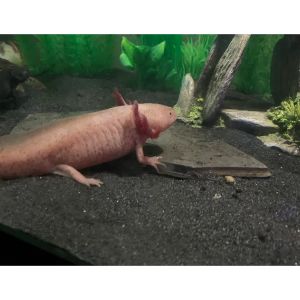
According to reputable breeders, the ideal temperature to initiate axolotl breeding is typically around 12°C to 14°C.
This temperature range can stimulate the male axolotls and encourage them to mate.
However, it is essential to note that for successful breeding to occur, the female axolotl must also respond favorably and be receptive to the male’s advances.
Both the male and female axolotls should have reached maturity and be ready to mate before attempting the breeding process.
Before introducing the male and female axolotls to the breeding tank, it is best to perform a water change.
After successful mating has taken place, change their water. During the courtship phase, avoiding or minimizing water changes is advisable.
That is to prevent any interference that could disrupt the breeding process.
Like how we desire privacy during our intimate moments with our partners, providing a calm and uninterrupted environment for the axolotls during this crucial phase is essential.
What To Do After Mating?
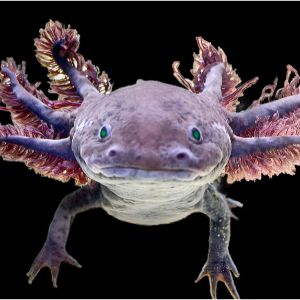
Once mating is complete, removing the eggs or the adult axolotls from the breeding tank is essential to prevent the adults from consuming the eggs.
If most of the eggs are around the plants in the tank, removing them along with the eggs is advisable to avoid causing stress to the adult axolotls.
Remove the male axolotl from the tank after separating the eggs and the parents. That allows the female axolotl to recover without any further disturbances.
It is best to make slight water changes of around 20% at least, ensuring that the water remains soft to avoid sudden fluctuations in water parameters that could stress the axolotls, particularly the females.
Giving birth takes a toll on their bodies, and maintaining stable water conditions is essential for their recovery.
It is common for females to experience health issues after giving birth. Providing extra care and attention to the female axolotl is crucial for her recovery.
Ensure that the water is well aerated at this stage to promote oxygenation and a healthy environment for the axolotl.
Taking Care of The Eggs
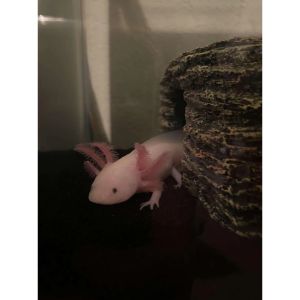
A fertilized axolotl egg typically measures around 1.1 to 1.5 cm or approximately half an inch in size.
In contrast, an unfertilized egg without spermatophores is about 0.2 cm in diameter.
The hatching period for axolotl eggs can range from 14 to 30 days, varying among individual eggs.
After hatching, the baby axolotl relies solely on the yolk sac within the embryo as its source of nutrition.
It will consume the remaining yolk until fully absorbed before requiring additional food.
It is crucial to closely monitor the hatching process, especially when dealing with many axolotl eggs, as individual variations may occur.
This reliance on the yolk sac lasts for approximately 24 to 72 hours, after which it becomes necessary to introduce suitable food for the baby axolotls once they eat it.
Younglings
Small Daphnia and newborn brine shrimps are excellent food sources for baby axolotls.
Breeders should gradually lower the water levels to around 4 cm to facilitate their feeding.
That creates a concentrated area where brine shrimps or Daphnia can gather, making it easier for the baby axolotls to access their food.
Young larvae axolotls can initially live together until they reach a length of approximately 2 cm.
At this point, it is best to house them separately to prevent overcrowding and ensure their individual growth and well-being.
Caring for many baby axolotls may be challenging for first-time breeders.
As a practical approach, focusing on and culling a portion of the batch is advisable rather than attempting to care for the entire pack.
That can involve giving away or selling the excess eggs, as individually caring for many babies requires significant time and resources.
FAQs About Axolotl Eggs

How long does it take for axolotl eggs to hatch?
Depending on water temperature, axolotl eggs typically take 14 to 30 days to hatch.
Warmer temperatures generally result in faster hatching times, while cooler temperatures can prolong the incubation period.
It’s essential to monitor the eggs closely during this time to ensure optimal conditions for their development.
What is the survival rate of axolotl eggs?
The survival rate of axolotl eggs can vary depending on various factors, including the care provided and environmental conditions.
With proper care and optimal conditions, the survival rate of axolotl eggs can be relatively high.
However, it’s important to note that not all eggs will successfully hatch and develop into healthy axolotls.
Genetics, water quality, temperature, and handling during incubation can influence the survival rate.
Generally, experienced breeders can achieve higher survival rates through careful management and attention to the eggs’ needs.
How do you take care of axolotl eggs?
Taking care of axolotl eggs requires attention to several key factors. Here are some guidelines for caring for axolotl eggs:
Water conditions
Ensure that the water in the egg container is clean and of good quality.
Use a gentle filtration system, such as a sponge filter, to maintain water circulation without creating strong currents that could harm the delicate eggs.
Temperature
Maintain a stable temperature within the recommended range for axolotl breeding, typically around 12°C – 14°C.
This temperature range helps stimulate the development of the embryos. Avoid significant fluctuations in temperature, as they can negatively impact the eggs’ viability.
Lighting
Provide a low-intensity, dimly lit environment for the eggs. Avoid exposing them to bright lights, as it can stress the embryos.
Indirect or subdued lighting is sufficient for their development.
Protecting the eggs
Place plants or other surfaces in the tank for the female axolotl to lay her eggs on.
These structures provide a safe attachment point for the eggs and make it easier to separate them from their parents later.
Observing the eggs
Regularly monitor the eggs for signs of development. Fertilized eggs will visibly increase in size and may show changes in coloration.
Remove any unfertilized or damaged eggs to maintain water quality and prevent the spread of potential infections.
Minimal interference
Avoid excessive handling or disturbances around the eggs. Too much disruption can stress the developing embryos.
Only intervene when necessary, such as removing unfertilized eggs or transferring them to a separate container for further incubation.
Maintaining stable water conditions, providing a suitable environment, and minimizing disturbances can increase the chances of successfully hatching and developing axolotl eggs.
How hard is it to hatch axolotl eggs?
Hatching axolotl eggs can be a delicate process that requires attention to specific conditions and careful monitoring.
While axolotls are known for their ability to reproduce readily, successfully hatching the eggs and raising the resulting larvae can present some challenges.
Here are some factors to consider regarding the difficulty of hatching axolotl eggs:
- Maintaining optimal water quality and temperature is crucial for developing and hatching axolotl eggs. Slight deviations from the recommended conditions can impact the viability of the eggs and hinder successful hatching.
- The quality and viability of the eggs themselves play a significant role in hatching success. Fertilized eggs have a higher chance of hatching than unfertilized or damaged eggs. It’s important to carefully inspect and remove any unfertilized or damaged eggs to maintain optimal conditions for the viable ones.
- Axolotl eggs typically take 14 to 30 days to hatch, depending on factors such as temperature and water quality. During this period, it’s crucial to maintain stable conditions and provide suitable food sources for the hatching larvae.
- After hatching, the larvae require proper nutrition and a suitable environment to thrive. Providing appropriate food sources, such as tiny live organisms like brine shrimp or Daphnia, and maintaining optimal water quality, are essential for their growth and development.
How many axolotl eggs survive?
The survival rate of axolotl eggs can vary depending on various factors, including environmental conditions, genetic factors, and the care provided.
Axolotls are known to produce many eggs in a single breeding event, with females laying hundreds of eggs. However, the majority of these eggs do not survive to adulthood.
In natural conditions, axolotl eggs face numerous challenges, including predation by other animals, fluctuations in water quality, and competition for resources.
Genetic abnormalities, diseases, or improper incubation conditions can also affect the survival rate.
It is challenging to provide an exact percentage for the survival rate of axolotl eggs since it can vary greatly.
However, only a tiny percentage of axolotl eggs successfully develop into mature individuals.
Some studies suggest that survival rates can range from 5% to 30%, although various factors can influence these numbers.
What do axolotl eggs look like?
Axolotl eggs are small and jelly-like in appearance. They are transparent and have a spherical shape.
The eggs are typically around 1.5 to 2 millimeters in diameter, making them relatively small.
When freshly laid, axolotl eggs are translucent and may have a slight pinkish or yellowish hue.
As they develop, the embryos inside the eggs become more visible.
You can observe the development of the axolotl embryos through the transparent egg membrane, which allows you to see the growing structures, such as the eyes, spinal cord, and gills.
As the development progresses, the embryos will continue to grow inside the eggs until they are ready to hatch.
At this stage, you may notice movement within the eggs as the embryos become more active.
Eventually, the hatching occurs, and tiny axolotl larvae emerge from the eggs.
It’s worth noting that the appearance of axolotl eggs can vary slightly depending on the specific genetic traits and individual variation among axolotls.
What is an unfertilized axolotl egg?
An unfertilized axolotl egg, also known as an unfertilized ovum or an unfertilized oocyte, refers to an egg that has not been in contact with the sperm.
In the case of axolotls, females typically release eggs into the water during the breeding season, and these eggs must come into contact with sperm for fertilization.
Axolotls are external fertilizers, meaning the female lays the eggs, and the male releases sperm into the eggs externally.
The sperm then enters the eggs and fertilizes them, initiating the development of the embryos.
If an axolotl egg does not receive fertilization within a certain period, usually a few hours after being laid, it remains unfertilized.
Unfertilized axolotl eggs will not develop further and will eventually degrade.
Unfertilized axolotl eggs can be distinguished from fertilized ones by their lack of embryo development.
Under a microscope or careful observation, unfertilized eggs will not show signs of growing structures such as the developing embryo’s eyes, spinal cord, or gills.
They will remain transparent and exhibit no movement or changes in appearance.
The Ultimate Guide to Hatching Axolotl Eggs
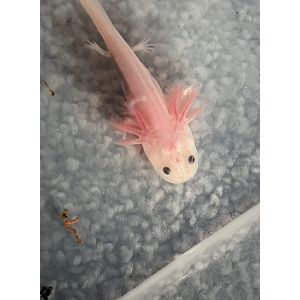
Hatching axolotl eggs is a process that requires careful attention, proper conditions, and monitoring.
Axolotls can reproduce readily, but successful egg hatching and larvae rearing can present challenges.
Factors such as water parameters, egg viability, incubation period, and larval care contribute to the difficulty of hatching axolotl eggs.
While hatching axolotl eggs requires attention to detail, many axolotl keepers and breeders have achieved successful results with proper knowledge and preparation.
Understanding the specific requirements of axolotl eggs and larvae and providing them with the necessary care and resources can significantly improve the chances of successful hatching.
With patience, dedication, and a good understanding of axolotl breeding, enthusiasts can embark on the rewarding journey of hatching axolotl eggs and witnessing the fascinating transformation of these unique creatures from eggs to thriving individuals.
If you find this guide, “The Ultimate Guide to Hatching Axolotl Eggs,” informative and helpful, you can check out these other animal-related articles from our team:
- Ultimate Guide to the Best Dog Foods and Treats
- Cane Corso Great Dane Mix – Ultimate Breed Guide
- The Ultimate Labradoodle Rescue Guide
You can learn more about axolotls by watching “Are Axolotls Good Pets?” down below:




